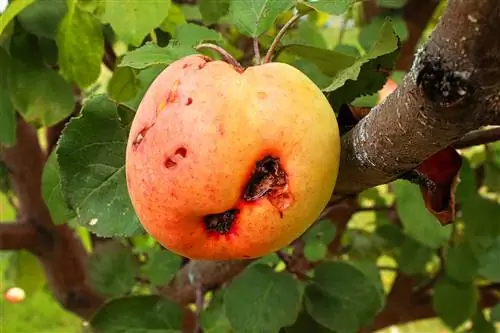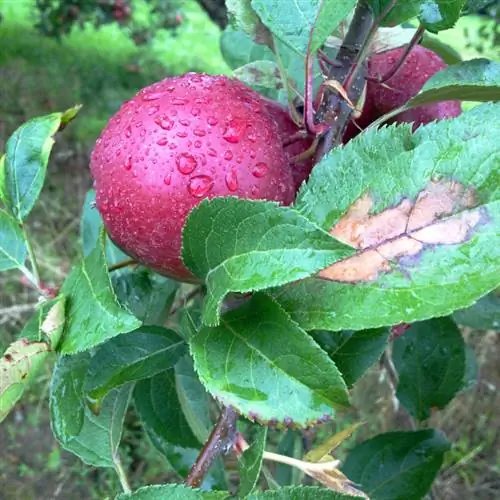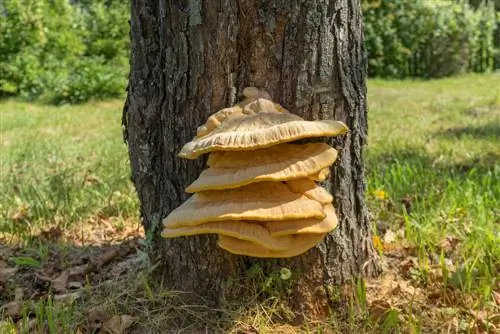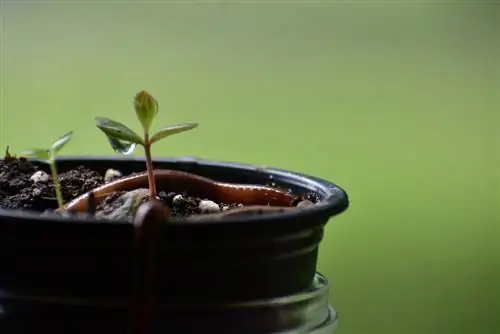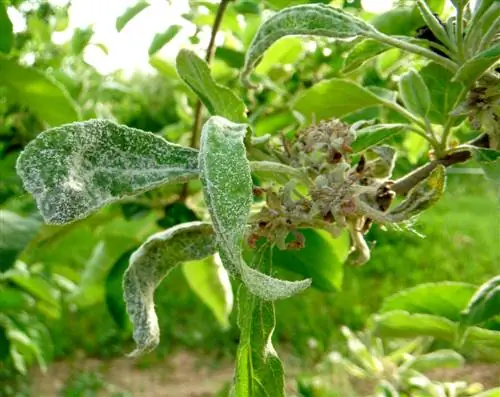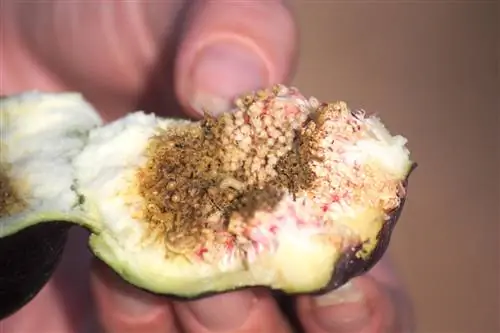- Author admin [email protected].
- Public 2023-12-16 16:46.
- Last modified 2025-01-23 11:22.
If the apples fall from the tree unripe in midsummer, worms could be to blame as well as massive leaf loss. In this article we will show you which caterpillars have made themselves comfortable on the fruit tree and how you can get rid of the animals in an ecologically friendly way.
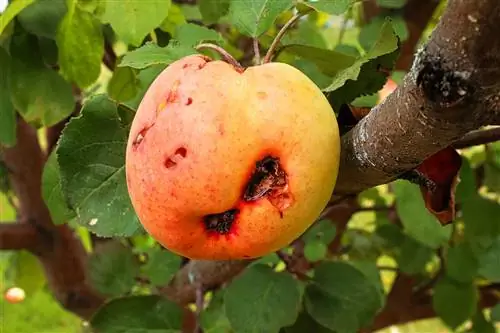
Which worms attack the apple tree?
Mostly the hairless caterpillars ofcodling moth, fruit tree moth or frost moth have settled on the tree until they pupate. If you discover worms on the leaves of the apple tree, they are not the invertebrates commonly referred to as worms.
How do I recognize the codling moth?
Thecaterpillarsof this greyish-brown butterfly with the conspicuous copper-colored dot at the end of the wing are only abouttwo millimeters longandYellowish colored. Since they feed on the pulp, peel and seeds of unripe fruits, they are also called fruit maggots.
Codling moths occur in two or more generations throughout the year. Since they eat apples of all levels of ripeness, an infestation leads to significant crop losses.
How can I prevent and combat the codling moth?
In addition toearly removal of worm-eaten fruits it has proven useful to shake the apple trees vigorously in spring. This causes the larvae that overwinter in the bark cracks to fall to the ground and can be picked up.
- Attach a trapping belt made of corrugated cardboard to the trunk in June. The caterpillars crawl into the cards, pupate and can be disposed of.
- The codling moth can also be successfully controlled in the home garden with the help of beneficial insects such as parasitic wasps and SF nematodes (S. felitae).
How do I recognize the apple web moth and how do I fight it
Theyellow-greenish caterpillarsof the apple web moth, which look like small worms, are on thedotsthat run in two rows on theBody easy to identify. They live sociably together in tight, dense webs.
- The easiest way is to brush the webs off the branches with a broom or rinse them with a sharp jet of water.
- Glue rings attached to the trunk prevent the larvae from penetrating the crown.
- Promote beneficial insects such as parasitic wasps, predatory wasps, songbirds, mice and hedgehogs.
How do I recognize and combat frostbite worms?
The worm-looking, almost hairless caterpillars of the frost moth are 2.5 centimeters long andcolored green. Since they only have two pairs of legs, they move with acharacteristic hump.
- You can effectively prevent frostbite infestation with glue rings that are installed from mid-October.
- Promote beneficial insects such as great tits.
- If the infestation is very severe, you can apply specific agents containing the active ingredient Bacillus thuringiensis.
Tip
Beneficial insects keep worms and caterpillars at bay
So that many useful insects can permanently settle in the garden, you should provide suitable nesting and winter quarters. Lacewings and earwigs feel comfortable in an upturned flower pot filled with wood shavings. Insect hotels provide a cozy home for wild bees and parasitic wasps.

